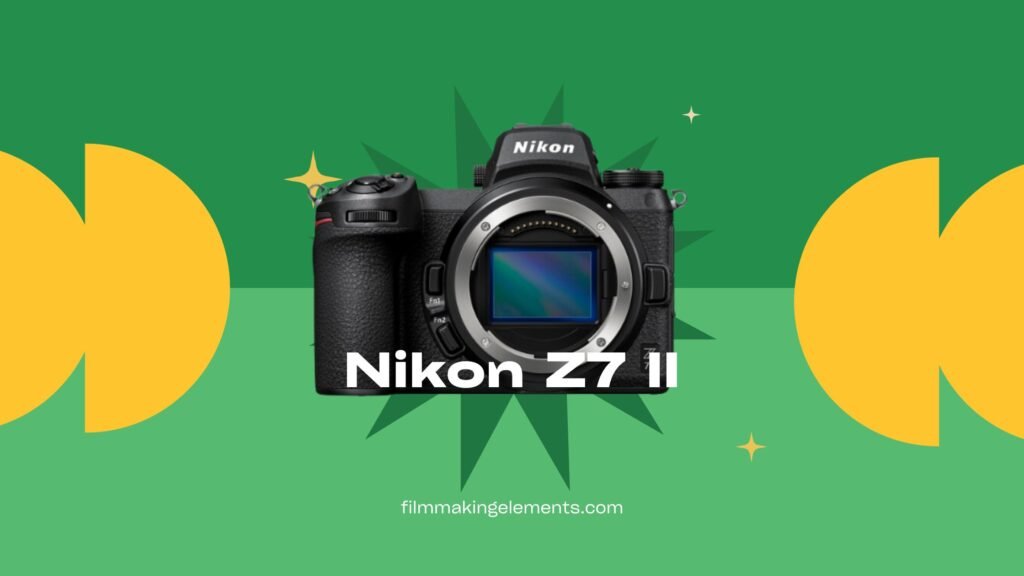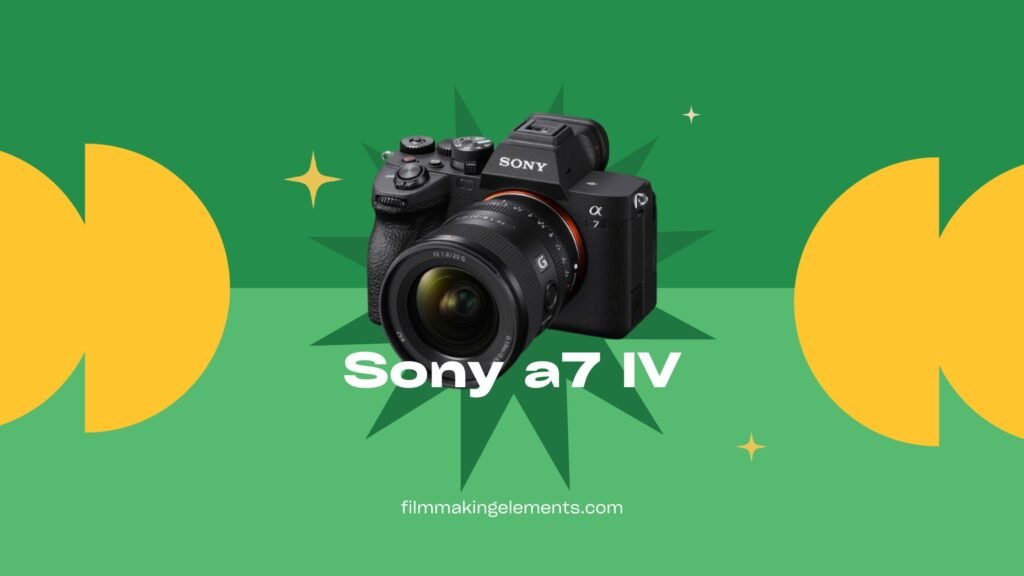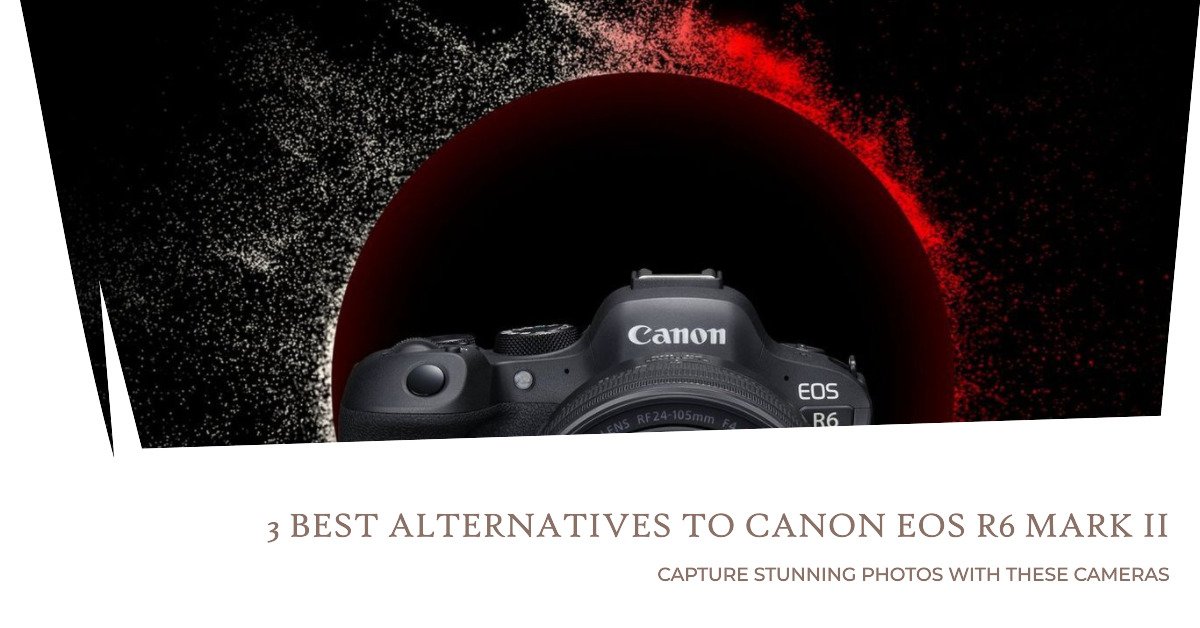Having immersed myself in the world of photography and videography for years, I’ve had the privilege of working with an array of camera systems, experiencing firsthand the evolution of technology and design. The Canon EOS R6 Mark II truly stands out as a juggernaut in the full-frame mirrorless arena. It brings together a stunning 24.2MP CMOS sensor, the powerful DIGIC X processing from the venerable R3, and unmatched UHD 4K video capabilities, all wrapped up in an intuitively designed body that feels like a natural extension of the hand. But I get it – we all have unique needs and preferences, and sometimes even a powerhouse like the R6 Mark II might not check every box on your list. I’ve narrowed down three alternatives to the Canon EOS R6 Mark II that deserve a spotlight.
1. Sony Alpha a7C II

If you are looking for a compact and lightweight full-frame mirrorless camera, you might be interested in the Sony Alpha a7C II and the Canon EOS R6 Mark II. In this section, I am going to tell why Sony Alpha a7C II is a good alternative to Canon EOS R6 Mark II. Both cameras offer impressive performance and features, but which one is better suited for your needs?
Sensor: Full frame or APSC
I’ve extensively worked with cameras and can vouch for the importance of a good sensor. Both these models boast full-frame sensors, enabling them to capture more light and detail. With a resolution of 24.2 megapixels, both cameras meet most photography needs. However, there’s a slight difference in sensor size, with the Canon EOS R6 Mark II being a tad larger (36 x 24 mm) than the Sony Alpha a7C II (35.6 x 23.8 mm). This might give the Canon a marginal advantage in low-light scenarios and depth of field control.
Autofocus and Lens Mount
From my experience, the autofocus system can make or break a shot. Both cameras excel in this area with on-sensor phase detection pixels. The Canon EOS R6 Mark II offers 4897 focus points, slightly overshadowing the Sony Alpha a7C II’s 693. While Canon has an edge with its superior subject tracking and recognition, Sony’s autofocus mainly recognizes human eyes and faces. Lens mounts differ too; Canon uses the RF mount while Sony goes for the E mount. Even though Canon’s RF mount is newer with more native lens options, Sony’s E mount has an extensive third-party lens selection.
Design: Dimension and Weight
For a photographer like me who’s always on the go, the camera’s size and weight matter. The Sony Alpha a7C II, with dimensions of 4.88 x 2.8 x 2.5 inches and weighing 509 g (excluding battery or memory card), is more compact than the Canon EOS R6 Mark II. Nevertheless, both models are quite portable compared to many full-frame DSLRs out there. Their weather-sealed designs are something I appreciate, ensuring durability against the elements. Canon offers more physical controls, but Sony compensates with a customizable function menu on its touchscreen.
Viewfinder and LCD monitor
Every professional knows the importance of a good viewfinder. While Canon’s EVF resolution (3.69 million dots) surpasses Sony’s (2.36 million dots), their magnifications and refresh rates are comparable. The LCD monitors on both cameras are touch-sensitive and adjustable, though Canon’s screen is slightly larger.
Battery Life
For someone like me, who might be out shooting all day, battery life is essential. The Sony Alpha a7C II offers a more extended battery life with 740 shots per charge, compared to Canon’s 580 shots. But the power delivery via USB-C ports on both is a lifesaver when you need to charge on the go.
Video Capabilities
I’ve ventured into videography, and both these cameras stand out in this domain. They can shoot splendid 4K video at up to 60 fps. Canon, however, offers more video features and lacks the crop factor present in Sony’s 4K recording at 60 fps. Their in-body image stabilization is a boon for handheld video recording, with Canon providing slightly better stabilization.
Price
Now, the factor that often becomes the deciding point: the price. The Sony Alpha a7C II is more budget-friendly at $1,899 for just the body and $2,099 with a 28-60mm f/4-5.6 kit lens. In contrast, the Canon EOS R6 Mark II is priced at $2,499 for the body and $2,899 with a 24-105mm f/4-7.1 kit lens.
2. Nikon Z7 II

Nikon and Canon are two of the most popular brands in the camera industry, and both have recently released their second-generation full-frame mirrorless cameras: the Nikon Z7 II and the Canon EOS R6 Mark II. Both cameras offer impressive features and performance, but which one is a better choice for your needs? In this section, I am going to tell why Nikon Z7 II is a good alternative to Canon EOS R6 Mark II.
Sensor: Full frame or APSC
Both cameras, the Nikon Z7 II and Canon EOS R6 Mark II, feature full-frame sensors, allowing for remarkable image quality due to the larger surface area that captures more light and detail. While the Canon EOS R6 Mark II boasts a respectable 24.2 megapixels, the Nikon Z7 II outdoes it with a 45.7-megapixel resolution. This, in my experience, allows the Nikon to produce significantly larger and more detailed images, especially when I’m cropping or printing. Yet, the Canon EOS R6 Mark II has an advantage in its ISO range, spanning from 100-102400 and expandable to 50-204800. In comparison, the Nikon Z7 II has a native range of 64-25600, expandable to 32-102400. This means that, in those low-light scenarios, the Canon EOS R6 Mark II has the upper hand.
Autofocus and Lens Mount
From my time testing, both these models use a hybrid autofocus system, merging phase-detection and contrast-detection. However, the Canon EOS R6 Mark II offers an astounding 4897 focus points compared to the Nikon Z7 II’s 493. But both impress with their advanced subject tracking and face/eye/animal detection capabilities. When out shooting, I’ve observed the Canon’s 100% horizontal and 90% vertical coverage to be slightly broader than the Nikon’s 90% horizontal and 100% vertical. Now, when it comes to lens mounts, both use their proprietary systems. The Canon utilizes the RF mount, and the Nikon goes with the Z mount. As someone who’s tried numerous lenses, the Canon’s 54mm diameter (compared to Nikon’s 55mm) has intrigued me with the potential for larger aperture lenses.
Design: Dimension and Weight
Physically, I’ve found them to be similar with large grips, a top LCD panel, mode dials, rear joysticks, and dual card slots. The Nikon Z7 II, measuring 138.4 x 98.4 x 88.4 mm and weighing 588g, is slightly bulkier than the Canon EOS R6 Mark II’s 135 x 97 x 88 mm and 565g. Both are ruggedly built and weather-sealed. Yet, it’s noteworthy that the Canon EOS R6 Mark II promises a longer shutter life with 500,000 cycles versus Nikon’s 400,000.
Viewfinder and LCD Monitor
As a keen viewer, the EVFs on both are impeccable. The Nikon Z7 II offers a marginally higher resolution at 3.69 million dots, compared to Canon’s 3.68 million. But, when peeking through the viewfinder, the Canon EOS R6 Mark II’s magnification of 0.76x feels closer than the Nikon’s 0.8x. When framing shots, the Nikon’s slightly larger 3.2-inch screen is a treat, but both cameras match up with a 2.1 million-dot resolution on their touch-sensitive LCDs.
Battery Life
Out in the field, I found the Nikon Z7 II can snap up to 420 shots using the EVF or 360 with its LCD. The Canon EOS R6 Mark II, however, goes up to 320 shots with its EVF but extends to 580 when using its LCD.
Video Capabilities
My video shoots have been a dream with both. The Nikon Z7 II can record 4K at 60 fps (with a 1.08x crop) or Full HD at 120 fps. In contrast, the Canon EOS R6 Mark II offers uncropped 4K at 60 fps or Full HD at an impressive 180 fps. Both cameras also support 10-bit video and can output 12-bit RAW video via HDMI.
Price
Now, premium gear comes at a cost. The Nikon Z7 II starts at $2999 (body only), $3499 with the 24-70mm f/4 lens, and reaches $3999 with the 24-70mm f/2.8 lens. The Canon EOS R6 Mark II is priced at $2499 (body only), $2799 with the 24-105mm f/4-7.1 lens, and goes up to $3599 for the bundle with the 24-105mm f/4 lens.
3. Sony a7 IV

Sony and Canon are two of the leading brands in the mirrorless camera market, and both have recently released their latest models: the Sony a7 IV and the Canon EOS R6 Mark II. Both cameras offer impressive features and performance, but which one is better for your needs?In this section, I am going to tell why Sony a7 IV is a good alternative to Canon EOS R6 Mark II.
Sensor: Full frame or APSC
Both cameras sport full-frame sensors, known for capturing ample light and detail. While Canon EOS R6 Mark II is equipped with a 24-megapixel resolution, the Sony a7 IV edges ahead with 33 megapixels. The differences might not be glaring in everyday scenarios but become evident when cropping or printing large images. Additionally, both employ back-illuminated CMOS sensors to enhance low-light performance and dynamic range. In the ISO department, the Sony a7 IV offers a range of 100-51200, expandable to 50-204800, matching the Canon EOS R6 Mark II.
Autofocus and Lens Mount
The realm of autofocus finds both cameras with swift and precise systems combining phase-detection and contrast-detection. The Sony a7 IV showcases 759 autofocus points covering 100% horizontally and 90% vertically. In contrast, the Canon EOS R6 Mark II provides a whopping 4897 points covering the entire frame both ways. While both cameras excel in tracking subjects, the Sony a7 IV’s eye autofocus – which can detect human, animal, and bird eyes – has left me particularly impressed. However, Canon leads in low-light autofocus, effective down to -6.5 EV.
In terms of lens compatibility, the Sony employs the E mount, and the Canon uses the RF mount. Both mounts boast a diverse lens selection. And for those attached to older lens systems, adapters are available.
Design: Dimension and Weight
In terms of design, the Sony a7 IV, measuring 131.3 x 96.4 x 79.8 mm and weighing 588g, is slightly more compact than the Canon EOS R6 Mark II. Both cameras prioritize ergonomics and durability with weather-sealed bodies and magnesium alloy frames. Notably, the Sony a7 IV offers dual memory card slots, supporting both SD UHS-II and CFexpress Type A cards, overshadowing Canon’s single SD UHS-II slot.
Viewfinder and LCD monitor
Both cameras possess high-definition EVFs, though Sony’s 0.78x magnification slightly trumps Canon’s 0.76x. For photographers preferring LCDs, Sony offers a 3-inch, 1.04 million-dot monitor. Canon, on the other hand, features a 3.2-inch monitor with a higher resolution of 1.62 million dots. Both are touch-sensitive, aiding in focus point selection and menu navigation.
Battery Life
Battery longevity is pivotal for any photographer. The Sony a7 IV’s NP-FZ100 battery promises up to 580 shots with the LCD and 320 with the EVF. Canon’s LP-E6NH offers up to 430 and 250 shots, respectively. Both support USB charging, a feature I’ve found immensely beneficial during prolonged shoots.
Video Capabilities
For videographers, both cameras can record 4K at 60 fps with 10-bit color depth and 4:2:2 chroma subsampling. The Sony a7 IV’s offerings, including S-Cinetone and S-Log modes, have given my videos a cinematic touch. Meanwhile, Canon’s C-Log and ProRes RAW modes cater to professional color grading and uncompressed recording.
Price
Lastly, the price factor. The Sony a7 IV starts at $2499 (body only), $2799 with the FE 28-70mm f/3.5-5.6 OSS lens, and peaks at $3499 with the FE 24-105mm f/4 G OSS lens. Canon’s EOS R6 Mark II is priced at $2599 (body only), going up to $3699 with the RF 24-105mm f/4 L IS USM lens.





